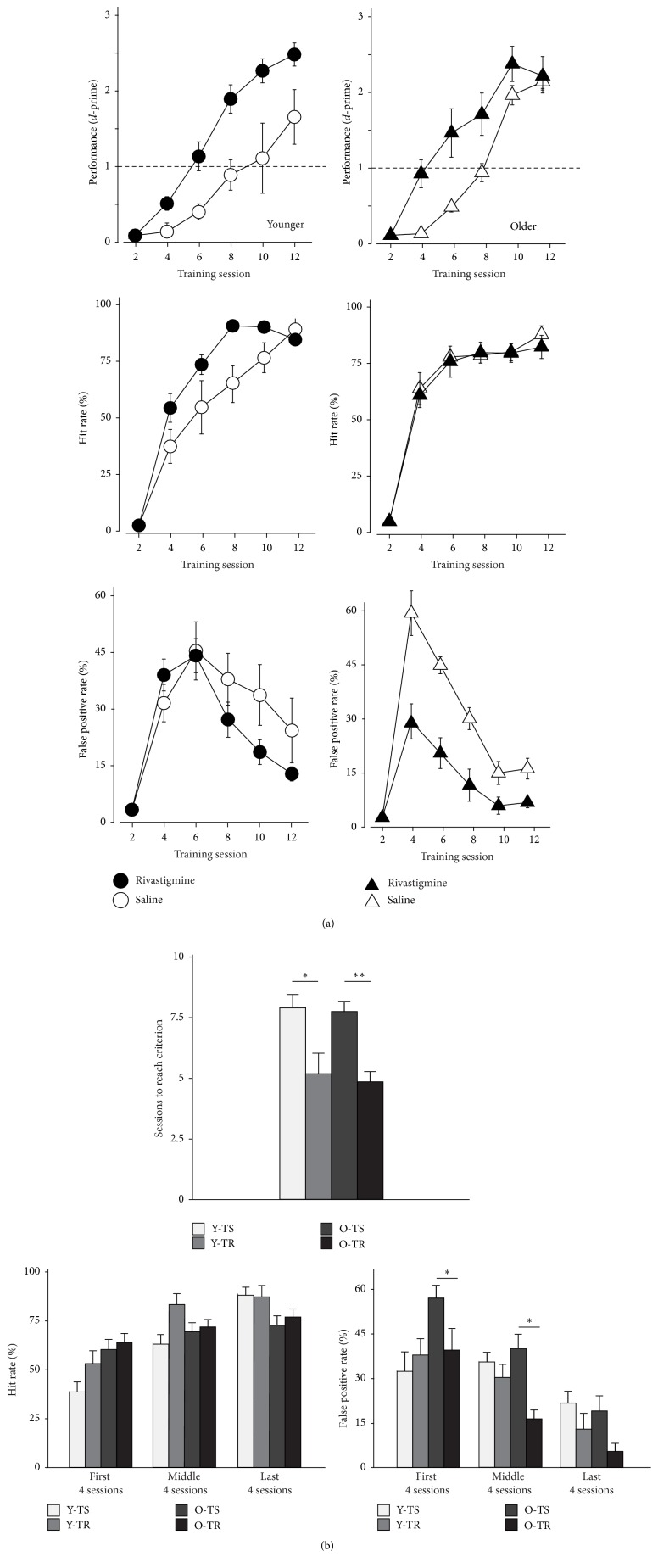Figure 2.
Impact of rivastigmine on auditory discrimination learning in young and older rats. Young (12–14 months old, n = 11) and aging (24–30 months old, n = 9) rats were trained on a two-tone discrimination task. In this go-no-go experimental paradigm, rats were rewarded with food for performing a behavioral response only when a 5 kHz tone was presented. The nontarget was always a 10 kHz tone. Lack of response to a target (miss) or a response to a nontarget (false positive) resulted in a delay before the next trial. One group of younger (Y-TR, n = 6) and older rats (O-TR, n = 4) was administered rivastigmine orally prior to each training session. The other younger and older groups (Y-TS, n = 5, and O-TS, n = 5) were administered an equivalent volume of saline before training. (a) Top row: average performance of younger and older rats on the training across time. A d-prime of 1 was used as the main criterion to determine mastery on the task. Middle row: average hit rate for each experimental group as a function of training sessions completed. Bottom row: average false positive rate for each experimental group as a function of training sessions completed. (b) Top row: average number of sessions to reach criterion in all experimental groups. Bottom rows: average hit rate and false positive rate, respectively, for the first and last four training sessions in all experimental groups. Values shown are mean ± SE. ∗ p < 0.05: ∗∗ p < 0.001: t-test.

